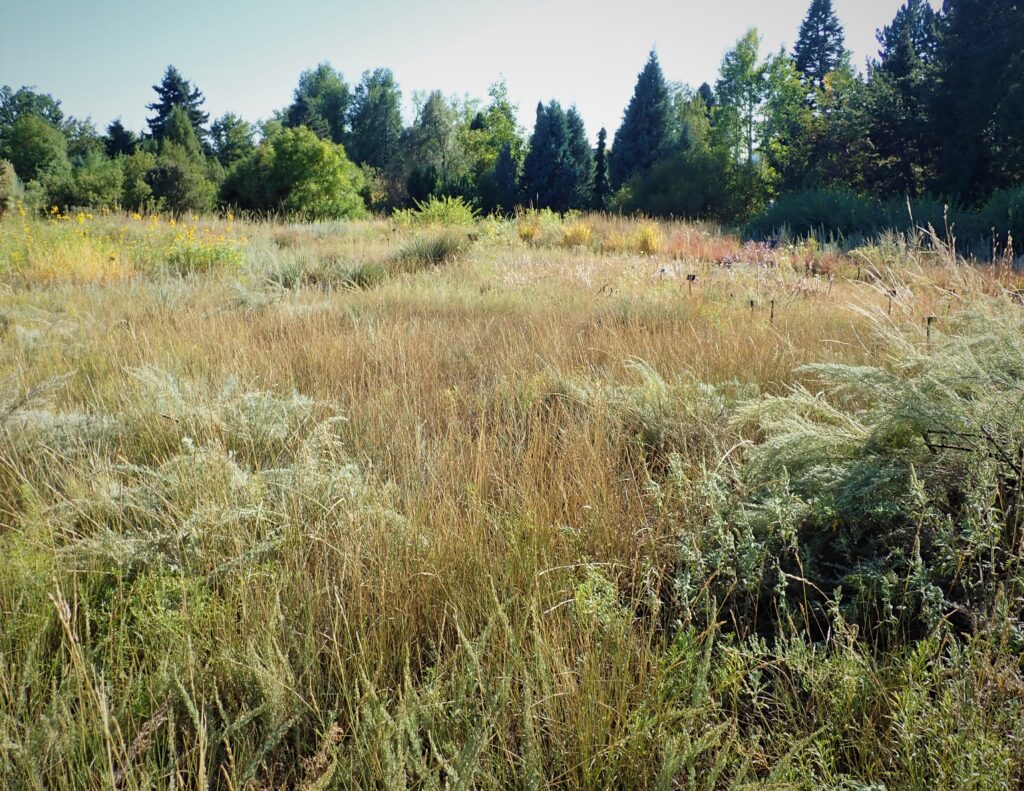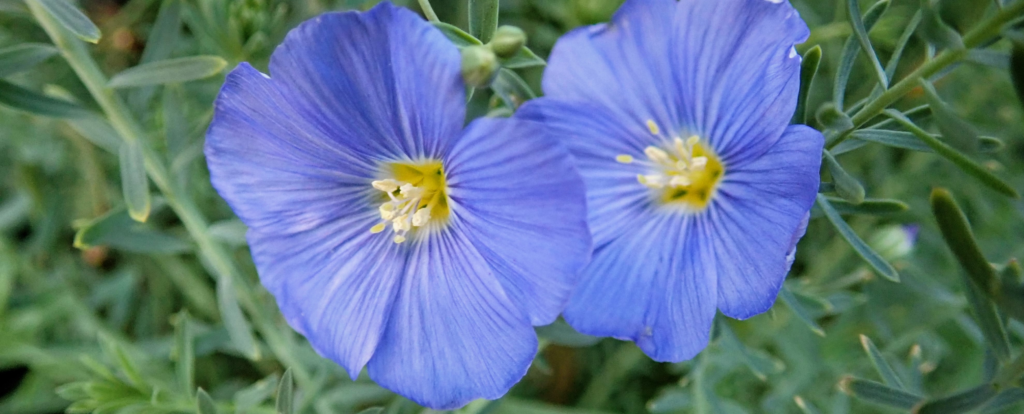By Deb Lebow Aal & Lisa Olsen. Updated October 2023 by Jen Smith.

We are frequently asked this question: “How do we know which plants are native to the Front Range?” The truth is it’s a controversial question: plants do move, albeit relatively slowly, aided by water, wind, animals, birds and humans. Researchers do their best to maintain accurate lists. Both the National Wildlife Federation and Audubon provide online search tools which generate lists of plants native to your zip code. Most of the plants listed are not available in the horticulture trade, and some that are listed are not particularly easy to grow in your garden. Beyond the internet, there are many wonderful public gardens where you can go and see our Colorado flora. For people living in the Denver Metro area, a great place to start is with a visit to Denver Botanic Garden’s’ Laura Smith Porter Plains Garden. It is a wonderful example of what the Front Range looked like before the arrival of European settlers. Seeds for this garden were sourced from areas within thirty miles of the York Street site.
We will mention a handful – not an exhaustive list by any stretch – of plants that grew along the Front Range before th arrival of Europeans. They are solid gateway plants for those who are new to native landscaping and all can be found flourishing in the Laura Smith Porter Plains garden, which receives very little (maybe no?) supplemental water. These plants are not difficult to find, either as seed or starter plants.
Prior to “development,” The foot of the Front Range was short grass prairie, dominated by our native Buffalograss (Bouteloua dactyloides), and Blue grama (Buteloua gracilis), with a smattering of Little Bluestem (Schizachyrium scoparium), and Indian Ricegrass (Oryzopsis hymnoides). Common perennials included Prairie Zinnia (Zinnia grandiflora), Scarlet globemallow (Sphaeralcea columnifera), Dotted Gayfeather (Liatris punctata), Blue flax (Linum lewisii), and Purple prairie clover (Dalea purpurea).

Of these, Deb’s personal favorite is Blue flax. But beware – once you have a few, you will have quite a few; it is a prolific re-seeder, so make plants to harvest some seed to share at our autumn seed swap (Blue flax is one of the first seeds to ripen; look to begin harvesting seeds in June). Its flowers are such a beautiful color – a luminous blue, and so “happy” in my garden.
A word of caution when shopping for Blue flax and Dotted gayfeather at most nurseries: the European Linum varieties including Linum narbonense (Plant Select) and Liatris spicata (native to Eastern North America) are more commonly available than our native species. With these plants, if you are looking at a named cultivar, it is not native to our region.
So, there you have it. A short list of easy-to-grow native plants to get your Colorado native garden in the ground. These plants grow in full sun, relatively poor soil (no need to amend or fertilize), and are very drought tolerant once established.
Curious to learn more about transforming your garden into a habitat with Colorado native wildflowers, grasses, shrubs, and trees? Check out our native gardening toolkit, register for an upcoming event, subscribe to our newsletter, and/or become a member – if you’re not one already!
